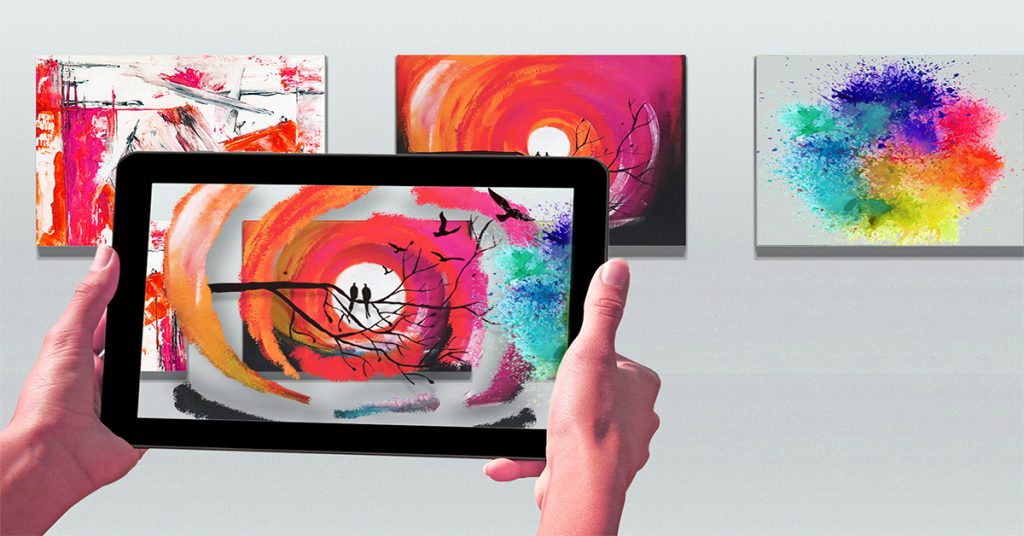Welcome to an exclusive interview with Jean-François Réveillard, an artist and pioneer in the field of digital and augmented reality art. Renowned for his innovative approach and versatility across various mediums, Jean-François offers a unique perspective on the intersection of art and technology. His work, primarily created on the MyWebAR platform, illustrates the transformative potential of augmented reality (AR) in contemporary art. Join us as we delve into the mind of this creative genius and explore his insights into the evolving world of AR and artificial intelligence (AI) in art.
Jean-François Réveillard: A Creative Visionary
Jean-François Réveillard, also known as JfR, resides in Switzerland and divides his time between Zürich, Paris, and other parts of the world. His artistic journey began in the 1980s, marked by a passion for digital media, video art, virtual worlds, and 3D printing. In 1997, he established one of Europe’s first webTVs, laying the groundwork for his innovative cross-media projects. JfR describes himself as a “Cross Media Picture Maker” and is a notable figure in the Post-Contemporary movement.
“I like to define myself as a cross-media picture maker and part of the Post-Contemporary movement,” JfR explains. “Since childhood, I have been writing, drawing, and making movies. After studying science (biochemistry) and art at the École du Louvre, I began using technology mixed with classical mediums. My journey began with video art in 1981, followed by creating web TV in Europe in 1996/97. I also pioneered virtual worlds and have been exploring 3D printing, AI, and AR ever since.”
Embracing Augmented Reality
JfR’s initial encounter with AR technology came through QR codes, which he found intriguing due to their ability to add a new dimension to objects. “My first encounter was with QR codes used as simple links,” he recalls. “I quickly thought of using them with video and was fascinated by the new dimension added to objects. After trying several platforms and creating my own coding, I searched for tools that synchronized with my concepts. The main feeling was about the added dimension, crossing with reality, and using smartphones.”
The Evolution of AR in Art
Digital art requires innovative ways of delivery, and AR provides a fresh perspective. JfR believes that AR is not just a trend but a vital tool for the future of art. “Digital art needs to find new ways of delivery,” he asserts. “Art uses a new brush of the century to stay connected and to share the best of human creation. The debate is not if it exists or if it’s good or not; it’s time to use it to stay in civilization under progress.”
Highlighting Key Projects
JfR’s exploration of AR began with his public exhibition in June 2022 during Basel Art Week. He created a series featuring 3D print sculptures and photographs enhanced with AR videos. “I find that augmented reality applied to street art is amazing, especially on big buildings,” he says. “One of my current research projects involves mixing virtual worlds powered by AR, particularly inside a museum dedicated to the story of Myrtis and a Virtual Museum focused on my AI and AR concepts.”
The Impact of AR on Art Perception
Using AR has significantly altered how viewers interact with and perceive art. JfR notes, “My artwork adds a new dimension and animation, changing how art lovers and collectors view art. The public is generally not close to digital, virtual, AR, VR, or AI technologies, but my work demonstrates a new way of seeing and experiencing art. Many people have changed their view about these technologies after interacting with my immersive artwork.”
Looking to the Future
The future of AR in the art sphere looks promising, with advancements in technology and new fields opening up for exploration. JfR anticipates further evolution in AR tools and techniques. “Art is a dimension added to reality by the artist,” he explains. “Digital is the new canvas, extending the field and providing new angles to reality. I am confident we will develop efficient and lightweight glasses systems and find new ways to embed QR codes in reality with devices like Vision Pro.”
Conclusion
Jean-François Réveillard’s groundbreaking work in integrating AR and AI into art offers a glimpse into the future of digital creativity. His innovative projects and installations continue to push the boundaries of art and technology, inspiring both the art community and the MyWebAR creator community. We look forward to witnessing his future projects and the continued evolution of AR in the art world.
Thank you for joining us in this insightful conversation with Jean-François Réveillard. His pioneering approach to AR and AI in art is not only transformative but also a testament to the endless possibilities of digital creativity.
